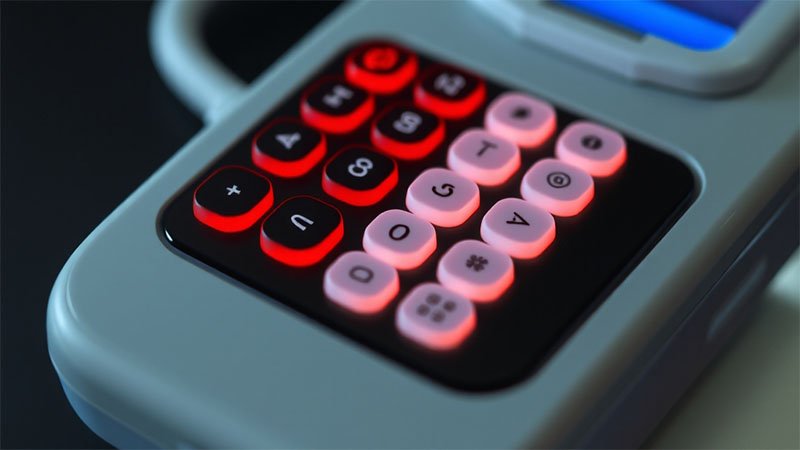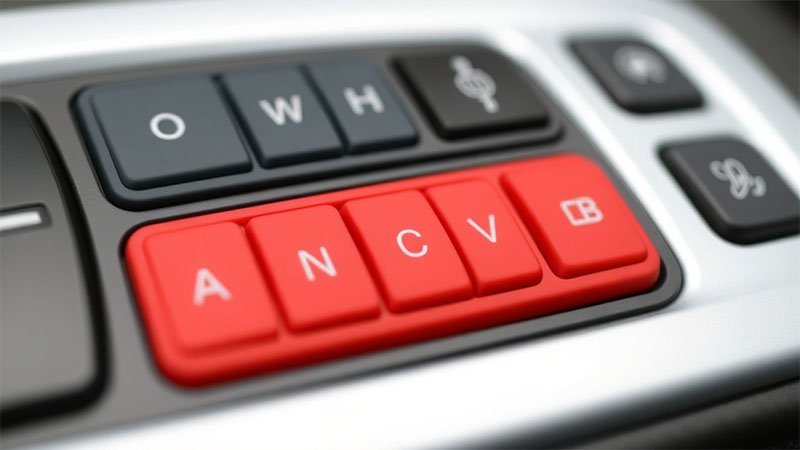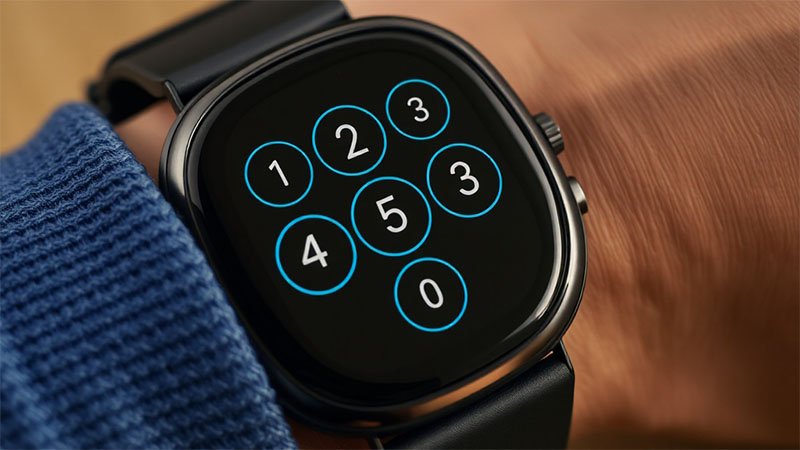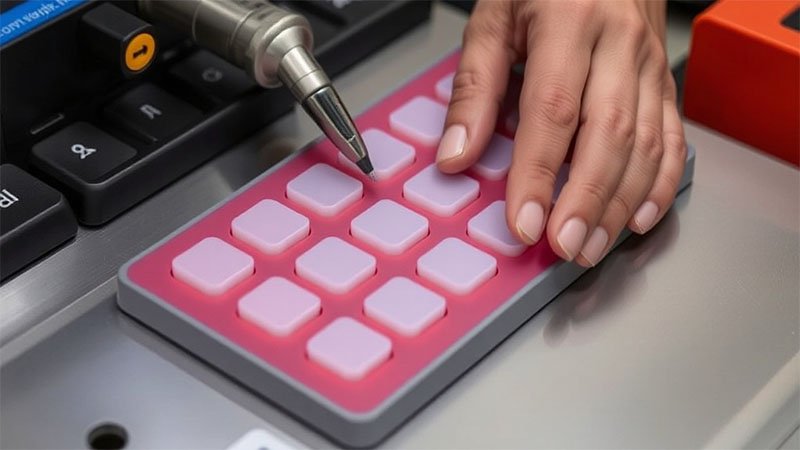Not all keypads are created equal. Each industry and device demands a different design approach to function effectively and look professional.
Custom silicone keypads are tailored based on the specific needs of the device and industry. Key design elements include layout, material, surface finish, and labeling.
Every product has its own challenges. Medical devices need cleanability, consumer electronics demand style, and industrial tools must survive the elements. I’ve helped companies across these sectors design keypads that do exactly what they need—let me show you how to plan yours.
How do consumer electronics shape keypad design?
In consumer products, appearance and comfort are just as important as function.
Consumer keypads focus on aesthetics, soft tactile feedback, and ergonomic layout. Designs often include vibrant colors, backlighting, and branding elements.

Think of remote controls, smart home panels, or gaming devices. These all rely on keypads that look sleek and feel responsive. For these, we often use low-tactile-force webbing and soft-touch matte finishes. Backlighting and logo integration are also big.
Materials are chosen for touch and durability—typically Shore A 40–50 silicone. Legends are usually laser-etched for backlit compatibility. Glossy accents or epoxy dots are common to highlight main functions.
| Feature | Common Specs |
|---|---|
| Tactile Force | 100g – 150g |
| Surface Finish | Matte or soft-touch coating |
| Legend Style | Laser etching with PU protection |
| Design Focus | Visual appeal, ease of use |
Consumer devices demand keypads that blend into the product visually while feeling smooth and intuitive.
What’s important for medical device keypads?
Cleanability, safety, and high contrast visuals come first.
Medical keypads require medical-grade silicone, smooth surfaces, and easy-to-clean coatings. Backlit and high-contrast legends improve visibility in clinical settings.

In this field, safety regulations are strict. We use FDA- or USP Class VI-grade silicone. The keys are often sealed with a continuous surface design to prevent bacterial buildup. Flat or recessed keys help reduce crevices.
White or light-colored silicone helps show contamination. High-contrast legends—often blue or black—stand out clearly. Coatings include anti-bacterial films or silicone spray for easier disinfection.
| Feature | Common Specs |
|---|---|
| Silicone Grade | FDA, medical-grade |
| Surface Finish | Gloss or sealed matte |
| Legend Type | Printed or etched with contrast |
| Design Focus | Hygiene, visibility, regulatory safety |
These keypads must perform reliably under constant cleaning and harsh disinfectants.
How are industrial keypad designs different?
Durability under extreme conditions is the top priority.
Industrial keypads must resist abrasion, water, dust, and chemicals. Strong tactile feedback and rugged coatings are key features.

We design industrial keypads for factories, outdoor equipment, and rugged tools. These need a Shore A hardness of 60–70 for durability. Keys are spaced wider apart for gloved use. High-tactile webbing (180g–250g) is typical for firm feedback.
We apply PU coatings and UV-resistant finishes. Legends are molded or laser-etched to withstand heavy use. Waterproof sealing structures like frame gaskets and O-rings are often added.
| Feature | Common Specs |
|---|---|
| Tactile Force | 180g – 250g |
| Surface Finish | PU coating, UV resistance |
| Environmental Proofing | IP65 or higher sealing |
| Design Focus | Impact resistance, long-term use |
In harsh environments, reliability beats style every time.
What do automotive applications require?
Auto keypads must survive high use, UV exposure, and extreme temperatures.
Automotive keypads focus on durability, UV resistance, and consistent tactile feedback. Backlighting and surface texture are used for night-time visibility.

Whether for dashboard controls or steering wheel buttons, automotive keypads need both form and function. They operate in temperature extremes and under frequent use. We use UV-stable silicone and thermal aging-resistant coatings.
Surface finish must match interior design—matte black is common. Legends are laser etched to let light through for night driving. Tactile force is moderate, with dome-style webbing for smooth feedback.
| Feature | Common Specs |
|---|---|
| Operating Temp | -40°C to +125°C |
| Legend Type | Laser etched with backlighting |
| UV Resistance | Essential for outdoor dashboard use |
| Design Focus | Longevity, safety, seamless integration |
We test these keypads with automotive-grade environmental cycles before approval.
How do wearable and portable devices influence keypad design?
Here, space and weight take priority.
Wearable device keypads use soft, flexible silicone with ultra-thin profiles. Tactile feedback is lower, and minimal design is preferred.

Think fitness trackers, portable monitors, or smartwatches. These require ultra-compact keypads with minimalist style. We use very soft silicone (Shore A 30–40) and reduce the key travel to as little as 0.3mm.
The legends are often integrated into the silicone or kept icon-only. Color coding helps identify functions without text. Some designs use capacitive touch areas combined with molded silicone domes.
| Feature | Common Specs |
|---|---|
| Silicone Hardness | 30–40 Shore A |
| Key Travel | 0.3mm – 0.6mm |
| Coating | Matte or fingerprint-resistant finish |
| Design Focus | Compact, minimal, user comfort |
Lightweight and seamless integration is what these keypads are built for.
What role does testing play across industries?
Each industry demands different performance metrics—but testing is essential for all.
Testing ensures keypads meet their industry-specific needs: from medical sterilization to industrial shock resistance. Every custom design must be validated before use.

Across all sectors, we run tests for:
- Tactile force consistency
- Cycle durability (500K+ presses)
- Temperature and UV aging
- Chemical resistance
- Waterproof rating
For regulated industries like medical or automotive, we follow ISO or FDA testing protocols. For consumer products, we focus more on user experience and wear resistance.
Here’s a sample testing matrix:
| Test Type | Industry Examples |
|---|---|
| UV Resistance | Automotive, Outdoor Devices |
| Chemical Resistance | Medical, Industrial |
| Cycle Life Test | All |
| Water Ingress Test | Wearables, Marine Equipment |
Testing isn’t optional. It’s how we ensure the final keypad performs in the field—not just in theory.
Conclusion
Different industries need different silicone keypad designs. Understanding the specific needs of each use case—from layout to testing—ensures your product is functional, durable, and reliable.